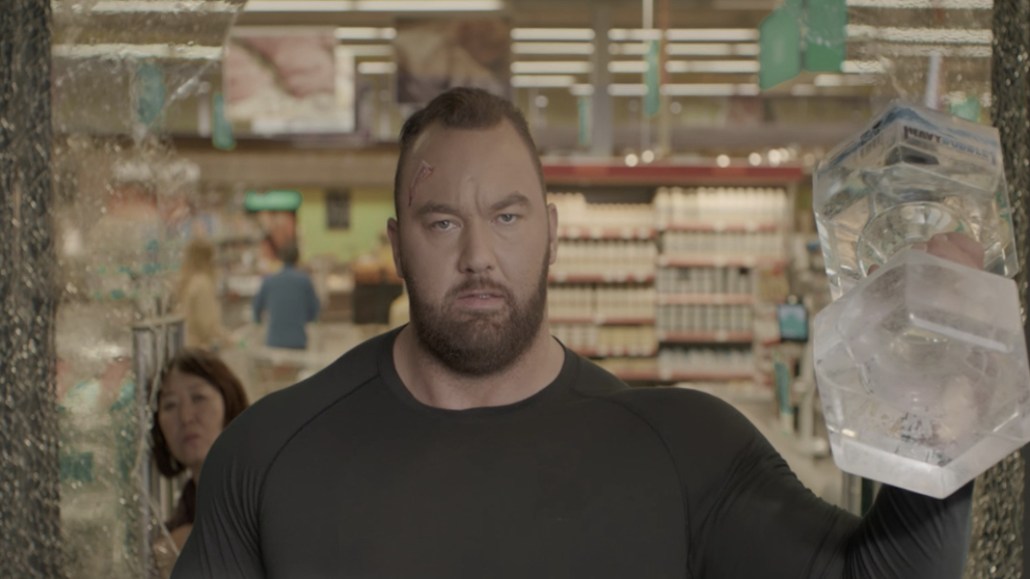Insights from CTV leaders at Dentsu, Horizon Media and more


The current political landscape has created a tricky environment for brands. But one advertiser, carbonated drinks kit SodaStream International, says there is no better time to be an activist than 2017.
Unlike many consumer goods companies, SodaStream was forged in the fires of controversy due to its inception in the West Bank. But since 2015, the company has ventured into the environmental arena too. After several viral videos — one starring “Game of Thrones” actor Hafþór Júlíus Björnsson — railed against the bottled water industry, SodaStream saw its starter kits go up 37 percent in 2016.
We caught up with Itai Bichler, the company’s head of global digital marketing, to find out more. Answers have been lightly edited for clarity.
More brands are being dragged into the political conversation than ever before — some more willingly than others. How should they respond?
Today it is tempting to try to take a ride on the trending thing or head-butt Trump, but if it doesn’t relate to what you do, then the media and the social sphere will see that it’s fake. Brands should communicate what they stand for, not what is trending right now.
SodaStream is a special case because as an Israeli company that once had a factory in the West Bank we were forced into the political arena regardless of anything we’ve done. The way we have prevailed is by being true to ourselves. This started with our simple video showing SodaStream employees from different religions and backgrounds working together.
Are brands too quick to jump on trending topics?
Yes. It is really important for brands to try and relate to trending events, but the execution has to amplify their own message. When we approached the “Game of Thrones” phenomenon with our agency Alenby for our “Shame or Glory” video, we took an iconic scene and mashed it up into something we stood for: reducing plastic waste.
People aren’t interested in what we as advertisers have to say, but they are interested in what’s already part of their life. For this reason, having an alter-ego approach is a big mistake.
So how can brands add value to these conversations rather than just noise?
You can never succeed without great creative. Just giving a brief that’s “Trump” or “Game of Thrones” or “Brexit” is not a brief. The great thing about digital is that it’s not constrained into 15-second spot; You can be artistic and you can tell your story in a meaningful way, as we’ve seen with Kenzo’s recent work.
It’s hard to squeeze a complex message into a 30-second commercial, and what we found is if you give yourself the creative freedom to tell the story in the best way you can, people will watch it all the way through. Content was the main driver of our success in 2016, and these were long videos up to three minutes in length.
And how do you measure success in a controversial area?
We have been able to attribute commercial success to the creative in our digital campaigns thanks to the studies we ran with YouTube and seeing our search traffic quadruple.
But for us, every digital execution we do has a PR element inside. It’s not necessarily about being provocative, but giving the media a cookie to bite on. “Shame or Glory” was really pushing the needle with our counterparts in the plastic bottles industry. We had seven cease-and-desist letters from each region we operate in but still carried on.
My main aim is to get shares in 100,000 ballpark. I don’t care about impressions, just engagements and shares as all the other metrics can be manipulated.
Hear more from Itai Bichler who is speaking at Digiday’s Brand Summit Europe this May in Berlin, Germany.
More in Marketing

X CEO Linda Yaccarino departs from the platform
Her departure marks the end of two tumultuous years at the platform.

Creator marketing has the reach — CMOs want the rigor
The creator economy got big enough to be taken seriously.

Pitch deck: Why Google believes its latest AI Max product is a game changer for search campaigns
AI Max, which launched May and rolls out this summer, aims to provide advertisers with a “one-click feature suite” for search campaigns.








